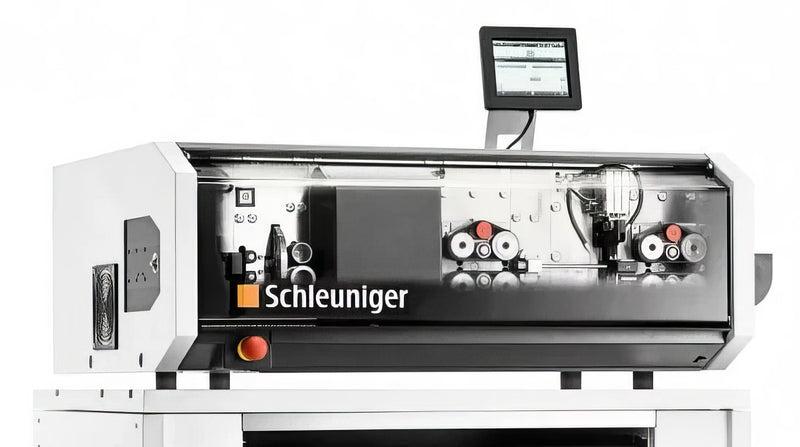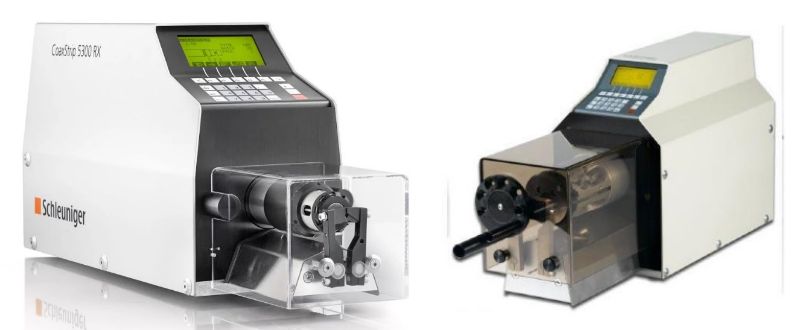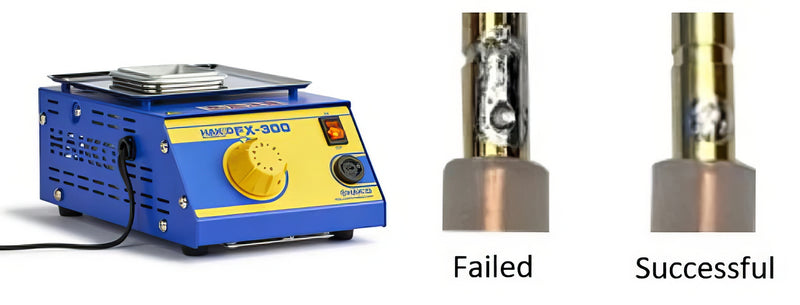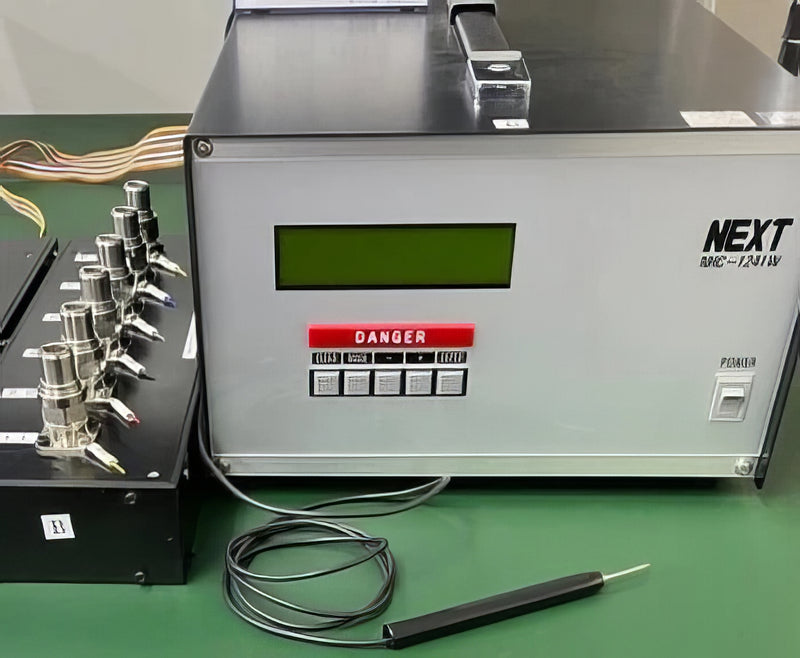How to Make a N Cable Using Solder and Clamp Connectors
Summary
N-type cables use coaxial cable with N-type connectors, often found in radio communication equipment, especially in the UHF band. While various attachment methods exist, soldering and clamping—or a mix of soldering and crimping—are most common. This guide covers the former, offering a step-by-step walkthrough for assembling an N-type cable using soldering and clamping.
There are two main steps to attach a N connector:
1. Solder the cable’s inner conductor (core) to the connector’s center contact.
2. Tighten the nut to secure the connector body to the cable’s outer jacket.
We will explain these in further detail below.
Alternatively, if you were looking for the procedure for using solder and crimp connectors, please see our other guide:
Benefits of Soldering and Clamping N Connectors
Cost-Effective
Soldering and clamping N connectors eliminates the need for a specialized crimping tool, reducing overall installation costs without compromising performance.
Superior Cable Retention
This method provides excellent mechanical strength, preventing cable slippage and ensuring a secure connection, which is especially important for longer cable runs and demanding environments.
Work Procedure
Below are the instructions for fabricating a solder-and-clamp type N cable. While steps may differ by product, NP-58/U is used as an example. Cable mounting diagrams for all products are available for download on the website under “View Datasheet” on the product details page.
Cut the Cable
Unbraid the Outer Conductor (Braid)
Strip the Cable
Solder the Center Contact
Tighten the Body with the Nut
Check Continuity and Insulation Resistance
Cut the Cable
Cut the cable to the required length, keeping in mind the "cut length." This is crucial, as the required cut length may differ based on the reference point for the overall length and the connector's internal dimensions. When the cable length is short or used in measurement applications, precision is especially important.
・If the total length is measured from the tip of the connector, the cut length will be shorter.
・If the total length is measured from the base of the connector, the cut length will be longer.
Trivia: Automated Cable Cutters

While cable cutting is typically done manually with cutters, it can also be automated with a cable cutting machine. At Tyclon, we use the “MultiStrip 9480” by Schleuniger, which enables fast and precise cuts. This machine also automates the subsequent “cable stripping” process.
Unbraid the Outer Conductor (Braid)
Slide the clamp, washer, and gasket onto the coaxial cable in that order, then cut the outer jacket as shown in the cable mounting diagram. Ensure the stripped dimensions match those specified in the mounting specification sheet. If using a knife, it may help to mark the cable beforehand. Next, slide the clamp onto the exposed outer conductor (braid) side, and unbraid the outer conductor. This step is crucial for the next stages.
Trivia: Unbraiding the Outer Conductor (Braid)

Unbraiding the outer conductor (braid) helps with later steps, like folding it back, aligning it for cutting, or thinning it for easier shell attachment. While this is often done by hand, using simple, low-cost tools can result in a cleaner, more precise finish. At Tyclon, we choose tools based on cable thickness and core count—such as hand unbraiding, pet combs, toothbrushes, or awls.
Strip the Cable
Align and fold back the outer conductor (braid) that was unbraided in the previous step, then cut the insulator according to the cable mounting diagram. Ensure the insulator dimensions match those in the mounting specification sheet. After folding back the outer conductor, use nippers to trim it just slightly shorter than the clamp. If cut too short, the cable may loosen; if too long, the shell may not fit correctly and the center contact may be pushed down.
Trivia: Cable Stripping Tools

Cable stripping is typically done with a cutter or similar tool. On job sites, portable and simple strippers are also prized for their convenience. At Tyclon, we use the Coax Strip 5300 and Coax Strip 5500 from Schleuniger. By registering the strip dimensions, we can consistently cut cables to the same exact size, ensuring quick and precise stripping every time.
Solder the Center Contact
Attach the center contact to the inner conductor (core wire) and solder it securely. Ensure the solder does not bulge and there are no gaps between the center contact and the insulator. Soldering requires precision to avoid defects like "cold solder joints," which can occur from excessive solder, high or low temperatures. These defects can cause trapped air or rough surfaces.
At Tyclon, we conduct an internal soldering test, and our skilled technicians perform careful soldering. Afterward, the contact is pulled with radio pliers (about 1 kg of force) to ensure no issues. We also use dedicated jigs to hold parts in place for precise and stable soldering.
Trivia: Pre-Soldering (Tinning)

At Tyclon, we sometimes pre-solder (tin) the inner conductor (core wire) before soldering the center contact. While not always necessary, this step helps create a stronger connection, especially for thick cables or cables with stranded inner conductors, where soldering only at the contact could lead to a weak bond.
Pre-soldering makes it easier for the solder to bond, resulting in a more reliable connection. We use Hakko's FX-300 solder pot to thoroughly tin the inner conductor by soaking it in solder.
Trivia: Lead-Free

At Tyclon, we use lead-free solder in all our cable assemblies. While our standard connectors contain lead, the RoHS directive permits up to 40,000 ppm of lead content. As global environmental regulations on lead tighten, Tyclon has developed lead-free connectors made with Mitsubishi Materials' GloBrass®—a lead-free, free-cutting brass. These lead-free connectors are available as custom-order products.
Tighten the Body with the Nut
Attach the shell and raise the fastening fittings. Tighten with a spanner or nut to complete the assembly. A slight tightening sound from the internal gasket signals that the process is complete. If you're unsure when fastening is finished or need to meet a specific torque specification, please contact us. At Tyclon, we use dedicated jigs to make tightening easier.
Check Continuity and Insulation Resistance
All Tyclon cable assemblies undergo continuity and insulation resistance testing after completion. This process helps detect issues like internal wire breaks or soldering mistakes that can't be seen visually. Only products that pass all in-house inspection criteria are shipped.

N Cable Using Solder and Clamp Connector FAQs
QIs custom cable assembly available?
QIs custom cable assembly available?
Yes, we can manufacture custom cables according to your specific requirements. Please submit your specifications or needs through the inquiry form.
QDo you offer lead-free connectors?
QDo you offer lead-free connectors?
Yes, we offer lead-free connectors made with GloBrass® (lead-free free-cutting brass) from Mitsubishi Materials. For further details, please visit the Lead Free Connectors page.
QWhat is your product inspection process?
QWhat is your product inspection process?
All finished products undergo rigorous 100% continuity and insulation resistance testing. Only items that meet all in-house inspection criteria are shipped.
QCan you handle large-volume orders?
QCan you handle large-volume orders?
Yes, we can accommodate large-volume orders. Please contact us directly to discuss lead times and specific requirements for your order.
Q Is it possible to request product samples?
Q Is it possible to request product samples?
Sample availability depends on the specific case. To inquire about samples, please contact us via the inquiry form for more details and availability.
QWhat frequency range do your N connectors support?
QWhat frequency range do your N connectors support?
Tyclon's N connectors include models that support frequencies up to 11 gigahertz, depending on the specific product and cable type used.
QDo your N connectors support outdoor use?
QDo your N connectors support outdoor use?
Yes, our N connectors (both 50 Ω and 75 Ω) are designed with robust, weather‑resistant construction for outdoor use, commonly seen in mobile base stations. Please specify environmental requirements when ordering.
QWhat tools are recommended for soldering N connectors?
QWhat tools are recommended for soldering N connectors?
Tyclon recommends using cable cutters or automatic cutting machines, cable strippers (Coax Strip series), flaring tools when needed, dedicated jigs to secure parts during soldering, and radio pliers for pull testing.
QCan you assist with selecting the right connector for my cable?
QCan you assist with selecting the right connector for my cable?
Yes, our technical team can help you select the appropriate N connector based on your cable type, application, and performance needs.


